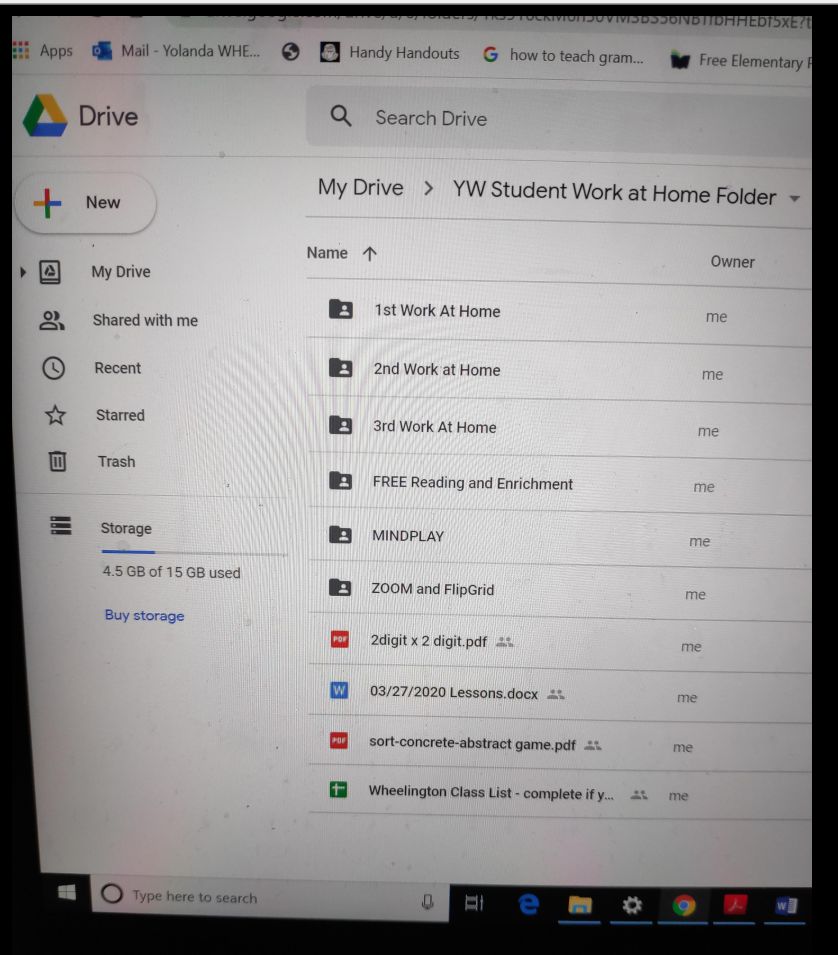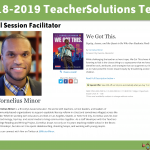Today, Governor Ducey and Superintendent Hoffman officially announced that Arizona schools will remain closed for the rest of the school year. I do not think anyone was surprised based on the push for a systemic approach for online instruction that has been happening across the state. If anything, hearing the official decision probably gave a sense of release and helped people know how to move forward.
So…this online teaching approach is going to stay here for a while longer. My class has been into this for three weeks now and my students have the system down. Their parents are not very involved in our ZOOM sessions anymore and the students know how to find their works. As a public Montessori school, my students are comfortable working more independently and making decisions about their learning. Our approach also helped me easily locate works and projects with enough variety for individualization. We simply continued these approaches on our virtual platform.
Upon reflection, I believe we were able to transition so quickly into online teaching because of our wonderful Principal. She has always supported teacher autonomy and supported our decisions. She told us on a Friday that next Monday, schools would be closed and we needed to start thinking about a plan for online and home-based learning. She told us to come in on Monday and prepare whatever we needed for our students to take home. We did. Parents came and picked things up on Tuesday. Tuesday night, we had our first whole class session on ZOOM and Wednesday morning we had our first online class. We have been rolling ever since. Not all of us went straight to online as quickly, but she supported each one of us where we were and helped us along based on our perspective, knowledge, and expertise.
I have not seen every student present during scheduled face time, but I have touched base with parents. I am working with my school to support the needs of students without internet access during the day. I also ensured students have non-computer based work that they can do. But with limited contact, I am not able to support them as I wish I could. We will continue to work on meeting these needs.
With this said, the vast majority of my students make it to our online daily sessions. Based on my observations and feedback from the past few weeks, here is what I have learned about online instruction:
- Keep it simple. We used virtual platforms that we were already using in class and I slowly walked them through new ones.
- Provide tutorials (on everything) as needed. Save your typing fingers.
- Do not reinvent the wheel. There are SO MANY wonderful resources ready right now. Use them.
- Use videos to supplement ideas and information. YouTube has a variety of age-appropriate videos that can be used to supplement online lessons.
- Use audiobooks to support reading. Again…YouTube. I have found the majority of our books here in chapter form. This is a support for the students (and the parents) that need that extra touch.
- Take attendance.
- Involve the students. They still have “group projects” that they work on virtually through ZOOM breakout rooms or parent online arrangements. This helps them with normalization and social interaction on a more intimate level.
- Allow students time to check in with each other, but keep the interactions focused on academics. If they start having conversations similar to what I hear on the playground, I remind them to schedule that for a non-academic time.
- Maintain high learning expectations. One of the things I appreciate about the Montessori method is there is minimal focus on a “grade”. Instead, the focus is on the learning that takes place and the outcomes. Therefore, students are still expected to demonstrate their learning. This, in turn, helps them stay vested in this process.
- Pay attention to student cues. I am finding that even with high engagement, the longest my student can endure online interaction is 2 hours. Often, they are ready to get to work in less time than that. The rest of the time is used for 1:1 check-in, preparing lessons, and touching base with parents as needed.
- Keep your prep time, lunch, break, etc. You are working. I continue with my prep time so that I am providing meaningful and enriching learning opportunities for my students, to the best of my ability. This helps me set boundaries and “end work” at the end of the school day.
- Be realistic. We are all doing our best daily, and that may not look the same every day. While maintaining high and meaningful goals, remember to give your students, parents, schools, and yourself grace every day.
- Take care of ourselves. This includes our families and children that are also experiencing this. We are their parents and we have to support our own kids as well.









